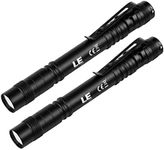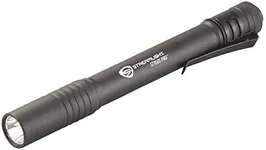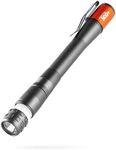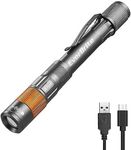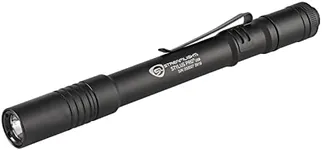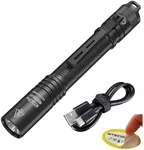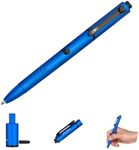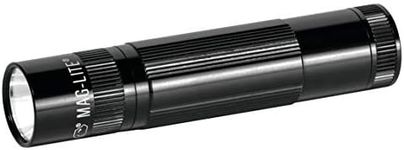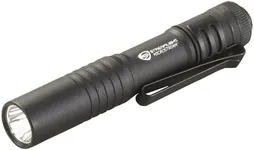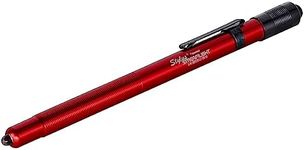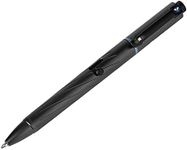Buying Guide for the Best Pen Flashlights
Pen-flashlights are compact, portable lights shaped like a pen, making them easy to carry in a pocket or clip onto clothing. They are popular among professionals like mechanics, nurses, and anyone who needs a handy light source for close-up tasks. When choosing a pen-flashlight, it's important to consider how and where you'll use it, as different features can make a big difference in convenience and performance.Brightness (Lumens)Brightness, measured in lumens, tells you how much light the pen-flashlight produces. A lower lumen count (around 10-50 lumens) is suitable for simple tasks like reading or checking small spaces, while mid-range (50-100 lumens) is good for general use in dim environments. Higher lumens (100+ lumens) are best for outdoor use or when you need to see further or illuminate larger areas. Think about your typical use: if you need a light for close-up work, lower lumens are fine, but for more demanding tasks, go higher.
Battery Type and LifePen-flashlights can use disposable batteries (like AAA) or rechargeable batteries. Disposable batteries are easy to replace and convenient if you don't have access to charging, but rechargeable models are more cost-effective and eco-friendly in the long run. Battery life varies depending on brightness and usage. If you need a light for long shifts or frequent use, look for models with longer battery life or easy recharging options. For occasional use, battery type may be less critical.
Size and WeightThe size and weight of a pen-flashlight affect how comfortable it is to carry and use. Slimmer, lighter models are easier to clip onto a pocket or carry all day, but may have less battery capacity or brightness. Larger models might offer more features but can be bulkier. Consider how you plan to carry the flashlight and whether you need something ultra-light or if a slightly larger size is acceptable for your needs.
Durability and Water ResistanceDurability refers to how well the pen-flashlight can withstand drops, impacts, and daily wear. Water resistance is important if you might use the flashlight outdoors or in wet environments. Look for models with sturdy metal bodies and some level of water resistance (often rated as IPX4, IPX7, etc.). If you work in tough conditions or outdoors, prioritize higher durability and water resistance. For indoor or light use, basic durability is usually enough.
Beam Type and FocusThe beam type determines how the light is spread. Some pen-flashlights have a narrow, focused beam for seeing details at a distance, while others have a wider beam for illuminating a larger area up close. Some models allow you to adjust the focus. If you need to inspect small areas or read, a wide, even beam is best. For spotting things further away, a focused beam is more useful. Choose based on the typical tasks you expect to perform.
Switch Type and Ease of UseThe switch is how you turn the flashlight on and off, and sometimes change modes. Some have a simple push-button, while others use a twist or tail-cap switch. Consider how easy it is to operate, especially if you’ll be using it with gloves or in a hurry. If you need quick, one-handed operation, look for a straightforward switch design. For more control or multiple modes, a more complex switch might be acceptable.
Clip and Carry OptionsMost pen-flashlights come with a pocket clip, making them easy to attach to clothing or gear. The strength and design of the clip can affect how securely the flashlight stays in place. If you plan to carry it daily, look for a sturdy, reliable clip. Some models also offer magnetic bases or other carry options, which can be useful for hands-free use in certain situations.
